3,5-Dibromosalicylaldehyde
- CAS NO.:90-59-5
- Empirical Formula: C7H4Br2O2
- Molecular Weight: 279.91
- MDL number: MFCD00003318
- EINECS: 202-003-4
- SAFETY DATA SHEET (SDS)
- Update Date: 2025-01-27 09:38:02
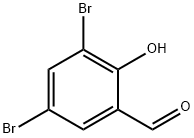
What is 3,5-Dibromosalicylaldehyde?
Chemical properties
yellow to yellow-brown crystalline powder
The Uses of 3,5-Dibromosalicylaldehyde
3,5-Dibromosalicylaldehyde reacts with alkyl cyanoacetates in the presence of ammonium acetate to yield 4H- chromenes. It can be used in the synthesis of Schiff base and can be used as reactant for synthesis of Schiff base ligands which forms mononuclear complexes with copper(II), nickel(II), zinc(II) and cobalt(II).
What are the applications of Application
3,5-Dibromosalicylaldehyde is a carbonyl compounds that can be used in the synthesis of Schiff base
General Description
3,5-Dibromosalicylaldehyde reacts with alkyl cyanoacetates in the presence of ammonium acetate to yield 4H- chromenes.
Properties of 3,5-Dibromosalicylaldehyde
| Melting point: | 82-83.5 °C (lit.) |
| Boiling point: | 261.2±35.0 °C(Predicted) |
| Density | 1.9661 (rough estimate) |
| refractive index | 1.4970 (estimate) |
| storage temp. | Keep in dark place,Sealed in dry,Room Temperature |
| solubility | methanol: soluble25mg/mL, clear, yellow to brown |
| form | Crystalline Powder |
| pka | 6.08±0.23(Predicted) |
| color | Yellow to yellow-brown |
| Water Solubility | Soluble in methanol 25 mg/mL. Insoluble in water. |
| Sensitive | Air Sensitive |
| Merck | 14,3027 |
| BRN | 1424739 |
| CAS DataBase Reference | 90-59-5(CAS DataBase Reference) |
| NIST Chemistry Reference | 3,5-Dibromosalicylaldehyde(90-59-5) |
| EPA Substance Registry System | Benzaldehyde, 3,5-dibromo-2-hydroxy- (90-59-5) |
Safety information for 3,5-Dibromosalicylaldehyde
| Signal word | Warning |
| Pictogram(s) |
 Exclamation Mark Irritant GHS07  Environment GHS09 |
| GHS Hazard Statements |
H315:Skin corrosion/irritation H319:Serious eye damage/eye irritation H335:Specific target organ toxicity, single exposure;Respiratory tract irritation H400:Hazardous to the aquatic environment, acute hazard |
| Precautionary Statement Codes |
P273:Avoid release to the environment. P302+P352:IF ON SKIN: wash with plenty of soap and water. P305+P351+P338:IF IN EYES: Rinse cautiously with water for several minutes. Remove contact lenses, if present and easy to do. Continuerinsing. |
Computed Descriptors for 3,5-Dibromosalicylaldehyde
| InChIKey | JHZOXYGFQMROFJ-UHFFFAOYSA-N |
New Products
Tetrabutylammonium iodide (3,3-DIFLUOROCYCLOBUTYL)METHANOL 4,4-DIFLUOROCYCLOHEXANAMINE Cyclobutylamine (S)-3-Fluoro-pyrrolidine hydrochloride 3-Oxocyclobutanecarboxylic acid N-Hydroxy-2-methylpropanimidamide L-tert-Leucine,97% 2-Bromophenylacetonitrile, 97% Aluminum oxide, basic Calcium hydroxide, 95% Diallylamine, 99% 2-Iodobenzoic Acid 3-Methoxybenzonitrile Pentachlorobenzonitrile Chloral Dibenzoyl Peroxide Titanium Dioxide O-Benzylhydroxylamine Hydrochloride 2-Nitrobenzaldehyde 2-Picolylamine (2-Aminomethylpyridine) 2-Venylpyridine Ethyl-2-Chloroacetoacetate 4-Dimethylamine PyridineRelated products of tetrahydrofuran




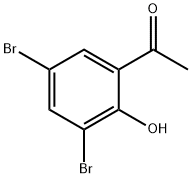
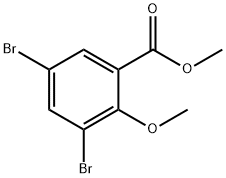
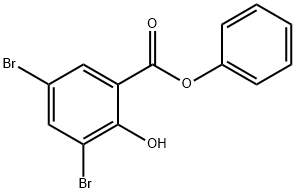
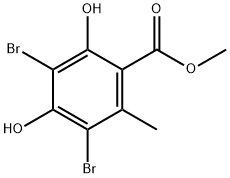
You may like
-
 3,5-Dibromosalicylaldehyde CAS 90-59-5View Details
3,5-Dibromosalicylaldehyde CAS 90-59-5View Details
90-59-5 -
 3,5-Dibromosalicylaldehyde, 98% CAS 90-59-5View Details
3,5-Dibromosalicylaldehyde, 98% CAS 90-59-5View Details
90-59-5 -
 3, 5-Dibromosalicylaldehyde, 98% CAS 90-59-5View Details
3, 5-Dibromosalicylaldehyde, 98% CAS 90-59-5View Details
90-59-5 -
 3,5-Dibromosalicylaldehyde CAS 90-59-5View Details
3,5-Dibromosalicylaldehyde CAS 90-59-5View Details
90-59-5 -
 1126-74-5 3-Pyridineacrylic acid 98+View Details
1126-74-5 3-Pyridineacrylic acid 98+View Details
1126-74-5 -
 tert-Butyl carbazate 98+View Details
tert-Butyl carbazate 98+View Details
870-46-2 -
 TETRABUTYLAMMONIUM CYANIDE 10442-39-4 98+View Details
TETRABUTYLAMMONIUM CYANIDE 10442-39-4 98+View Details
10442-39-4 -
 19752-84-2 TETRAHYDRO-2H-PYRAN-3-OL 98+View Details
19752-84-2 TETRAHYDRO-2H-PYRAN-3-OL 98+View Details
19752-84-2
Statement: All products displayed on this website are only used for non medical purposes such as industrial applications or scientific research, and cannot be used for clinical diagnosis or treatment of humans or animals. They are not medicinal or edible.